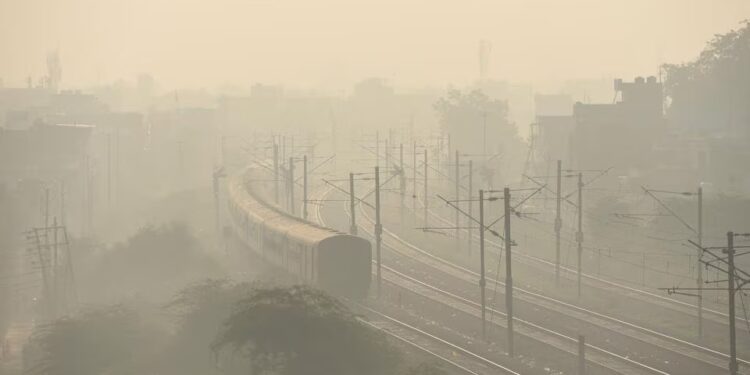Lagatar24 Desk
New Delhi: Delhi’s notorious air pollution, long blamed for respiratory and cardiac ailments, is now taking a serious toll on eye health. Recent studies reveal that toxic air filled with fine particulate matter (PM2.5) and harmful gases is damaging vision by inflaming the cornea and reducing tear quality.
How Air Pollution Damages the Eyes
The eyes’ outer surface — including the cornea, conjunctiva, and tear film — is constantly exposed to pollutants such as nitrogen oxides, sulphur dioxide, and PM2.5 particles. Research published in JAMA Ophthalmology and Environmental Health Perspectives has shown that these pollutants can cause dryness, allergic conjunctivitis, and even increase the risk of cataracts. In Delhi, where PM2.5 levels often exceed 200 µg/m³ during winter, many residents suffer from eye redness, itching, and burning, signaling the deep impact of pollution on vision.
What New Studies Reveal About India’s Eye Health Crisis
A 2024 study published in Scientific Reports examined over 32 million eye-related hospital records across India and found a strong correlation between air pollution and eye disease. The findings linked emissions from vehicles, cooking fuels, and incense burning with increased cases of eye disorders. While rural areas contributed nearly 80% of cases, Delhi ranked among the worst-affected. The study highlights that fine particulate exposure can cause chronic inflammation leading to long-term visual damage.
Delhi’s Smog and Its Impact on Vision
Delhi’s dense winter smog, created by vehicle emissions, industrial pollution, and crop residue burning, traps harmful particles close to the ground. Doctors report a spike in patients suffering from burning, irritation, and watery eyes during this period. Studies in The Lancet Planetary Health have found that prolonged exposure to such pollution accelerates eye degeneration, including glaucoma and corneal opacity.
The Hidden Burden in Rural India and Among Women
While Delhi’s air crisis garners headlines, rural India faces an invisible epidemic of pollution-linked eye diseases. The main culprits are indoor pollutants from biomass fuels like wood and cow dung. Women, who spend more time near cooking fires, face double or triple the risk of cataracts, according to studies in BMJ Open and Environmental Research. Urban residents, in contrast, benefit from cleaner energy sources and better access to healthcare.
Why Eye Health Must Be Part of Air Quality Policy
Experts from the Indian Council of Medical Research (ICMR) have called for including eye health parameters in India’s air-quality monitoring systems. Laboratory findings published in Nature Communications show that ultrafine particles can penetrate the cornea and cause DNA damage. While measures such as air purifiers and protective glasses can offer temporary relief, long-term prevention depends on strict emission control and cleaner energy policies.
How to Prevent Pollution-Linked Eye Damage
Eye specialists recommend these key precautions to minimize pollution’s effect on the eyes:
-
Use wraparound sunglasses or pollution goggles when outdoors.
-
Rinse eyes regularly with clean water or saline solution.
-
Stay hydrated and use preservative-free lubricating drops.
-
Avoid outdoor exposure during peak smog hours.
-
Improve indoor air quality by reducing smoke sources and using air purifiers.
-
Schedule routine eye check-ups for early detection of damage.
Experts warn that Delhi’s toxic air is not just choking lungs — it is quietly eroding vision. Protecting eye health must become as urgent a priority as cleaning the air itself.









